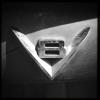Originally posted by VAR1016
Yes but I see that one was registered in New Zealand in 1922......
New Zealand?
davidsmanson also mentions one being displayed at the Salon d'Automobile in 1921.
By the way, Ballot were obviously very capable people. They turned out those Indianapolis cars in some very short time... I remember discussing this with the owner of the car now in Lyons, just after he'd spent over 1000 man hours building up a new crankshaft (four pieces, from memory, with each piece joined to the next by a tapered joint... a very small machining error would make a large difference to the length of the crank and thus make all that work useless...), and in the context of the time it took to build the four cars for Indy I remarked on how little time they had to make such mistakes.
But Racing Ron remarked that an error on one could be corrected on the next crank, so enabling them to live with those tolerances until they were making the final crankshaft.
My point is, having taken minds well away from it all by myself, that just two years later Ballot were into a production twin cam car. Their obviously enthusiastic team of machinists and foundrymen and other craftsmen had proved themselves well capable of doing this kind of job in this kind of time. Easily...
And for my money, fifty cars is well within the description of 'production'...
















